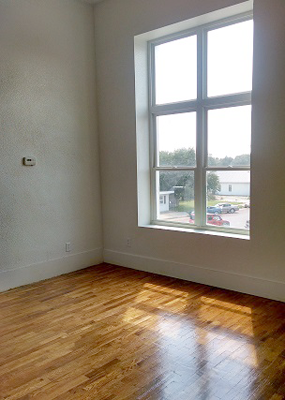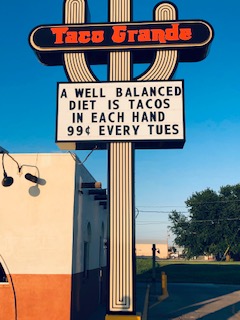Viewpoint Column by Doug McKinney, NCRPC Executive Director
You know you are in downtown Denver when each evening fire trucks roll by every hour and hints of smoke are in the air at the pedestrian level. I was in Denver recently for a regional director’s conference facilitated by the Economic Development Administration. Forums occurred whereby regions were able to share what services they provide and how development occurs for new or different offerings. The conference is an opportunity to learn from peers.
Some of the most recent NCRPC developments I shared at the conference included nuisance reduction/abatement, housing down payment assistance, food system assessment and unmanned aircraft system research. Notably, NCKCN remains the first and only not-for-profit Internet service provider started and still operated by a regional development organization.
Credit was given to staff, board and partner involvement for all that the NCRPC and its affiliates offer. In addition to the more recent developments, the core services remain solid facets of this regional development organization that was begun in 1972 by active leaders with vision for future collaborations.
Economic resilience was a theme of the conference, especially in light of disaster recovery. Being prepared for disaster — be it cyber, fire or water related — remains important. The ability to recover and build back better when challenges arise is critical for our communities to thrive.
Finally, the Census 2020 is near and vitally important to places and people in Kansas. Communities that prepare and support the count are likely to see beneficial results. Kansas Health Foundation is supporting this with a promotional campaign. The League of Kansas Municipalities has received a grant award from KHF through which it will provide assistance to cities in Kansas to aid in census accuracy. To learn more, visit the website at kansashealth.org/2019/03/12/2020census/.
As always, contact NCRPC for technical assistance with this or other needs. Safe journeys.
This article appeared in the September 2019 NCRPC Newsletter.

 High school seniors in North Central Kansas are invited to compete for a chance to win $850 by submitting a written essay or short video in the 2019-2020 Rural Voices Youth Contest.
High school seniors in North Central Kansas are invited to compete for a chance to win $850 by submitting a written essay or short video in the 2019-2020 Rural Voices Youth Contest.



 A new NCK-WiFi hotspot was added this summer at the Jamestown city park/baseball fields — bringing the number of NCK-WiFi locations to 16 distributed throughout 7 cities. Plans are underway to continue expanding the network throughout North Central Kansas.
A new NCK-WiFi hotspot was added this summer at the Jamestown city park/baseball fields — bringing the number of NCK-WiFi locations to 16 distributed throughout 7 cities. Plans are underway to continue expanding the network throughout North Central Kansas. The two-county pilot project of the NCK Home Ownership Program assists home buyers by reducing the barriers of down payments and closing costs. The program offers a combination of a down payment assistance loan of $10,000 and closing cost grant of $2,000 when purchasing a home of $50,000 or greater in Ellsworth or Lincoln County. Funds are limited and available on a first come, first serve basis.
The two-county pilot project of the NCK Home Ownership Program assists home buyers by reducing the barriers of down payments and closing costs. The program offers a combination of a down payment assistance loan of $10,000 and closing cost grant of $2,000 when purchasing a home of $50,000 or greater in Ellsworth or Lincoln County. Funds are limited and available on a first come, first serve basis.